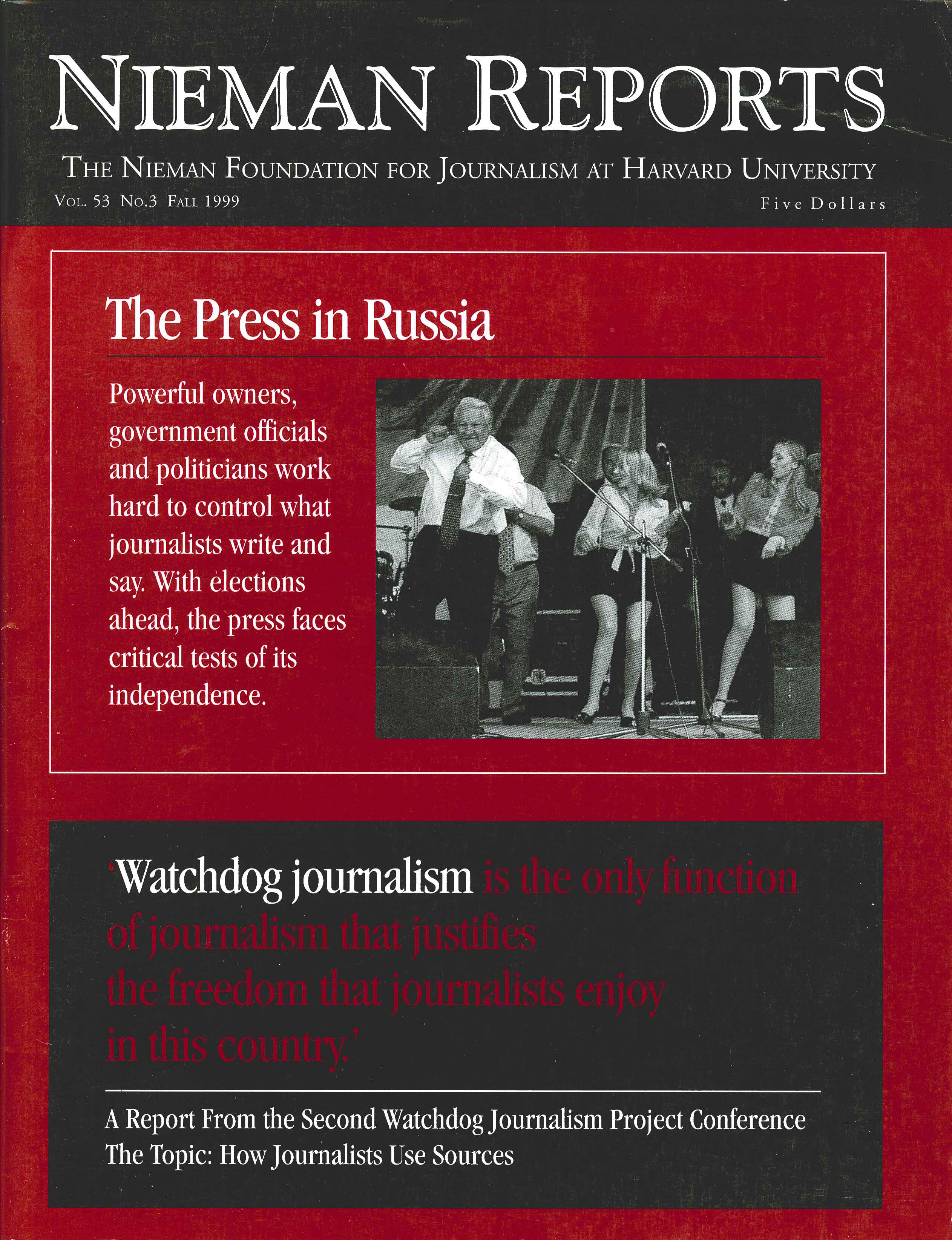I will never forget that morning back in April 1992 when the old master looked at me like I was nuts. Bill Kovach was telling me that USA Today had no business pushing the late Arthur Ashe into disclosing that he was dying from AIDS.
That’s right. Kovach, the Curator of the Nieman Foundation and one of strongest defenders of hard-hitting, deep-digging reporting, told me that USA Today had gone too far. Funny, isn’t it? I guess all of us have our limits. To this day, it doesn’t take much to get me feeling teary-eyed when thinking about Ashe. This man was an icon of what is good about sports at a time when money has trumped integrity and success has become more important than excellence.
Born black and poor, Ashe fought his way over every kind of adversity to become one of the world’s most recognized tennis players and a diplomat of the world. Then he became HIV positive—a result of a blood transfusion during surgery in 1983. He died on February 6, 1993, from complications that resulted from AIDS. It is ironic that Ashe’s greatest legacy might be the dignity he displayed as he was dying from AIDS and his ability to convince many who were reluctant to regard this disease as a public health issue to view it as such. Ashe forced powerful people, including then-President George Bush, into looking at the disease as something other than the “gay plague.”
It is worth asking whether any of this would have happened had USA Today not pushed Ashe into a situation in which he publicly disclosed his illness.
Like other arenas of journalistic coverage (most notably politics), issues involving privacy have been a part of sports reporting for several decades. One of the most significant legal cases in the history of American journalism involved football coach Wally Butts, then the head coach at the University of Georgia. The U.S. Supreme Court held that The Saturday Evening Post libeled Butts when it accused him of throwing a football game.
The Post’s story had been based on someone thinking that he’d overheard Butts discuss this at a pay telephone. Butts didn’t do it, but still the Post didn’t have to pay Butts a dime. Butts was determined to be a public figure, according to the Court. Football coaches, it seems, are immune to libel.
But should sports reporters probe deeper into a player’s or coach’s life away from the athletic arena? Are there acknowledged limits to coverage of the personal lives of sports figures at a time when President Clinton’s affair with Monica Lewinsky was front-page news? Gene Policinski, who was Sports Editor at USA Today when the Ashe story broke, feels strongly that there are boundaries, but defining just where these boundaries are can be difficult. Policinski would set the boundary line as being at a point that is as far as reporters can go in obtaining “a good story with legitimate news value.”
“Arthur Ashe was a public figure who was sick and was going to die,” said Policinski, who is now with the Freedom Forum. “The fact that it was from AIDS really didn’t enter into the news judgment. We would have gone after it if it had been cancer.”
Today it is difficult to pick up a sports section or watch a sporting event on TV without finding some athlete’s privacy being invaded. During this year’s Wimbledon tennis coverage, the story a lot of viewers will remember was not one that took place on the court, but rather the “news” being reported about Alexandra Stevenson’s father. Turns out that she had been raised by her mother, former Philadelphia sportswriter Samantha Stevenson. But it was not until she reached the semifinals of Wimbledon that the media revealed that her father was former basketball star Julius Erving.
Here’s how it happened. The Fort Lauderdale Sun-Sentinel found a birth certificate that listed Erving as her father. Eventually, he confirmed he was her father, had provided financial support to her and her mother, and met his daughter just one time. Not so long ago these kinds of stories were grist for the tabloid mill, but nowadays they quickly surface in the mainstream press. When this “news” became public, Stevenson’s mother angrily denounced the disclosure as “an unethical piece of journalism” and declared that “it should not have happened.”
Stevenson’s reaction appears a bit incredulous given her own forays into breaking similar stories. Only one month earlier she had broken a story in The New York Times about Damir Dokic, the father of top tennis player Jelena Dokic. Stevenson reported that he had been arrested for drunk and disorderly behavior at a tennis tournament in Birmingham, England.
Did the Stevenson coverage represent “a good story with legitimate news value” or does it provide another example of the sort of voyeurism that has become all too prevalent today?
Given how some tennis parents seem incapable of remaining in the background, it’s an easy judgment call to suggest both stories were inside the line of legitimate news. Both Damir Dokic and Samantha Stevenson have used their children’s athletic prowess to draw public notoriety to themselves. To claim a privacy right after you participate in news conferences touting your daughter’s abilities or subject others to boorish public behavior is almost laughable.
Some athletes, such as NBA bad boys Dennis Rodman and Allen Iverson, invite scrutiny of their personal lives because of their behavior off the playing field. Rodman, one of the best rebounders in the game of basketball, has always willingly put himself in the public spotlight, whether it has been on the basketball court or holding a news conference dressed in a wedding gown. Similarly, Iverson, now one of the top point guards in the NBA, has never refused to shake off his “gangsta” image that began when he played collegiately at Georgetown. Admittedly, other athletes are pulled into the not-so-pleasant limelight by events that take place in their personal lives, such as an athlete who “fathers” several children out of wedlock, another who is arrested for drunken driving, or a coach who abuses his wife or girlfriend.
There are other circumstances where the question about whether coverage is deserved is not so clear. An athlete’s sexual orientation is one of those areas. Sports Illustrated, in one of its many stories on the world champion U.S. women’s national soccer team, couldn’t resist raising the question about lesbians on the team by quoting defender Kate Sobrero’s wonderfully oblique retort to a male follower who asked if she was a lesbian. “No,” she replied. “But my girlfriend is.”
While a great quote and insightful about Sobrero’s poise and grace, the question about her sexual orientation seemed gratuitous.
Another is private behavior that never becomes part of the public record. Julius Erving didn’t deserve having his relationship with Samantha Stevenson disclosed because he fulfilled his responsibilities to support his daughter. Unfortunately for him, Samatha Stevenson made herself part of her daughter’s story. Her willingness to throw stones while living in a glass house is what made her daughter’s story fair game for other reporters to pursue.
Then there are the “rumor stories.” Several years ago, Wisconsin football coach Barry Alvarez had to deal with publication on the Internet of scurrilous rumors about his personal life. These rumors resulted in a situation in which nearly every news outlet in the state set out to determine if they were true. No reporter was able to confirm them, but for weeks journalists delved into every part of the coach’s private life searching for anything to substantiate the rumors.
Alvarez won’t talk about this episode, but these kind of situations are becoming more and more common as Internet sports bulletin boards are becoming more infested with gossip and innuendo. There isn’t a sports editor or reporter who doesn’t read those bulletin boards, fearful that something vicious and personal will be posted and force them to investigate, even though the “news” has more likelihood of being a snipe hunt than it does of producing a legitimate story.
How should sports reporters and editors deal with these kinds of decisions?
What follows is a series of questions that I think would be useful to ask.
1. Would failure to report the story indicate a bias on the part of the newspaper or outlet?
For years, writers and editors seemed more interested in recounting the legends about sports figures than reporting the more complicated stories about the real people who played these games. Often they would look the other way when athletes misbehaved. Clearly that attitude has changed, even though there remains criticism from readers and listeners who don’t like their “heroes” to be portrayed with their human foibles. Yet it is my firm belief that no sports reporter should place himself or herself in the position of having to explain why he or she did not write a potentially embarrassing story about an athlete if the news was judged to be relevant, important and legitimate.
Simply put, athletes, coaches, sports figures and owners who play at top competitive levels are public figures. As a result, in today’s media marketplace what they do on and off the field seems likely to find its way into the stream of news. And this will probably happen whether or not the “news” has any direct bearing on how these people perform in their jobs. This circumstance is bemoaned by those who worry about what happens when more and more people’s privacy seems senselessly jeopardized. But in such a highly competitive news environment, expect more, not fewer, such revelations.
2. Is this a good thing?
This question seems no longer relevant. With myriad media outlets, there are always going to be reporters and editors who believe strongly that disclosure is important either because it will enhance ratings or circulation or because it merits journalistic scrutiny. Some newspapers and electronic media aren’t ever going to shy away from these kinds of stories. The rest may wait a day or two, but eventually the pressure to match what has been disclosed becomes too great even for those bothered by the intrusion into the privacy of a sports figure’s life.
If reporters and editors shy away from their tough job of striking a balance between fair reporting and legitimate invasions of privacy, then their credibility as gatekeepers of the news will be damaged. The most important obligation we have to the public is to be an objective observer of the sports industry and its participants, rather than to act as a cheerleader for them.
3. Is the “news” about a sports figure in the public record?
Private behavior becomes public once the cops are called or a lawsuit is filed. However, reporters and editors need to assume their responsibility for illuminating the various sides of the story instead of rushing to judgment by publishing a headline that might sell more papers but unfairly injure the athlete’s reputation. Given the huge amount of money many professional athletes make, it is more than possible that they are being set up or falsely accused.
4. Is the behavior or incident of such significant importance that it provides an indication of the person’s judgment and character?
NBA star Charles Barkley has insisted for many years that he is not a role model for any youngsters except his own children. The problem is that Barkley’s insistence doesn’t alter the fact that top athletes have always been viewed by children as heroes and probably always will be.
Given the press scrutiny that their personal lives and decision-making are subjected to these days, the challenge for sports figures will be to perform as well outside the playing arena as they do in it. One thing is clear: In this new era of sports journalism—particularly with the Internet playing such a pivotal role—it will become “news” when they don’t.
Tom Witosky is sports projects reporter for The Des Moines Register and 1992 Nieman Fellow.



